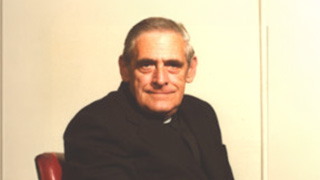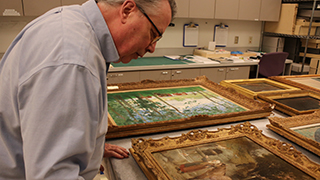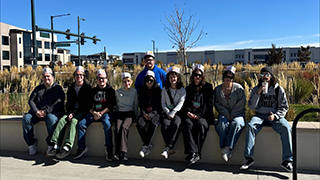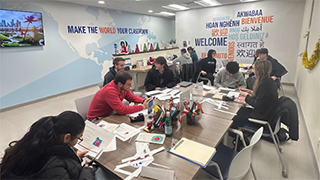Inside the Core, We Begin Core I With an Interchange of Ideas
Thursday, September 12, 2024

Monsignor Thomas Fahy, President of Seton Hall University, 1970-1976.
Inside the Core this week, we are already in our third week of classes. In Core I, students are reading works rooted in the Catholic intellectual tradition (Monsignor Fahy’s Inaugural Address and Nostra Aetate from Vatican II) and several works by Plato (the Allegory of the Cave, The Apology, and The Symposium). Already we can see a kind of dialogue between and among these texts, as we examine various ethical and moral positions, questions about good and evil and an exploration of the mysteries of life, death and love.
In my own Core I class, after reading the Allegory of the Cave, students wrote informally in class about different "caves," such as listening only to people with whom one agrees and not considering other perspectives than one’s own. They mentioned things like taking an easy path in school (i.e. being "lazy" as the student put it) or using one’s phone to escape from all kinds of things. Moving out of this type of cave is an important step of growth. In fact, such a cave is analogous to what Monsignor Fahy talks about in his Inaugural Address (1970) where he discusses how the colleges and universities of his day were criticized for being "irrelevant" for hiding in ivory towers, impervious to the actual problems and needs of the surrounding world. He said, "Instead of a whole-hearted, broad-based effort to solve these terrible human problems in the best traditions of Americanism and Christianity as long understood, the collective alumni of our colleges to a large degree temporize, adopt half measures, give excuses, meanwhile hoping against hope that the problems of poverty and racism will solve themselves by some magic, or, better yet, disappear. These are some of the particulars on the bill charging us with irrelevancy."

Vatican II.
Another "cave" might be the closed doors toward those of other faiths, doors which the writers of Nostra Aetate were trying to open by their, at the time, strong statement of affirmation for the beliefs of those in other religious groups than the Catholic Church, the maker of the document. For example, the document says, "The Catholic Church rejects nothing of what is true and holy in these religions. She has a high regard for the manner of life and conduct, the precepts and doctrines which, although differing in many ways from her own teaching, nevertheless often reflect a ray of that truth which enlightens all men." In a sense this document was opening doors closed for millennia, inviting people out of the cave of isolation and xenophobia into the light of encounter and dialogue.
Finally, Plato’s Symposium offers a variety of perspectives on love, including those excerpted in our textbook, specifically, comic playwright Aristophanes’ story about the circular, original humans, cut in half by Zeus, longing for their "other half." This humorous but semi-serious story is coupled with Socrates’ philosophical depiction, taught to him by the wise woman Diotima (an actual person or figure being a topic of debate), of the ascent through love from individual physical beauty of a beloved person to larger concepts of beauty up to an embrace of absolute Beauty, what we would call God, the source of all beauty and love. No other ascent out of the cave of isolation could be more powerful than that of love, moving the soul toward the source of all Love and all Beauty.
So, the semester has already begun with a fascinating and powerful interchange of ideas. As we move forward in the semester, Core I will explore other texts dealing with transformations from the Bible, Christian writings like those of Augustine and Dante, texts of other religious traditions (Islamic, Hindu), and secular/political texts. The focus is meaning and the goal of finding the truths addressed in them.
Categories: Faith and Service





